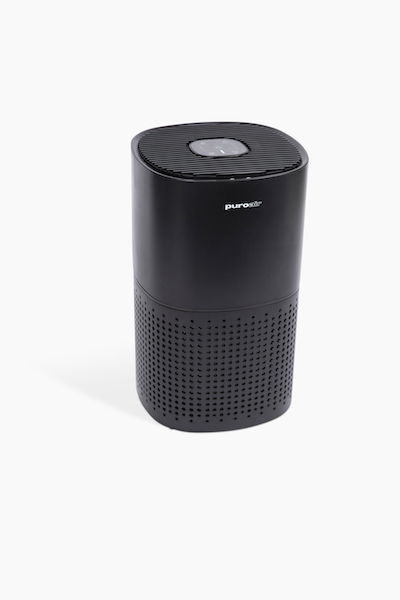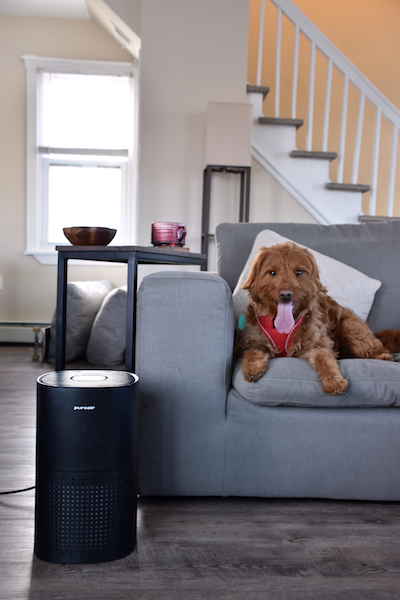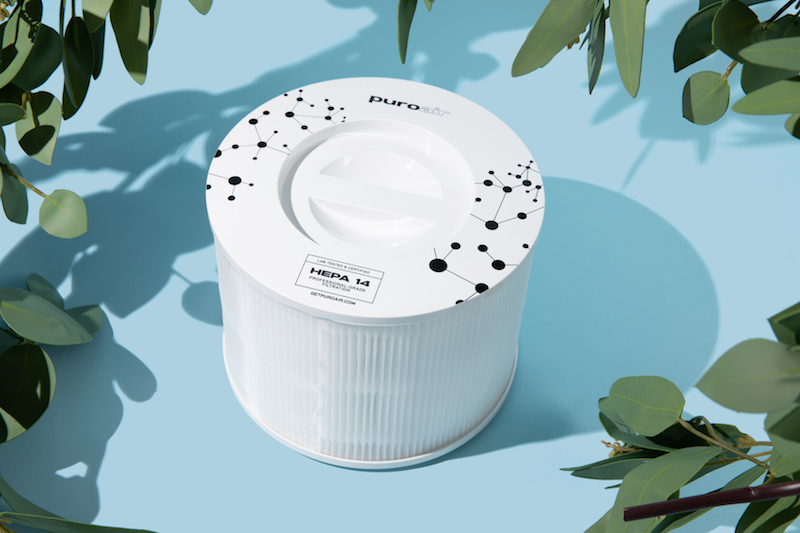Poor indoor air quality (IAQ) is a significant health hazard for people. According to the U.S. Environmental Protection Agency, the health effects associated with indoor air pollutants include irritation of the eyes, nose, and throat; headaches, dizziness, and fatigue; and respiratory diseases, heart disease, and cancer. There are a wide range of air purifiers available today. They come in all different sizes and at varying price points.

PuroAir recently provided me with a PuroAir 240 air purifier to evaluate for an article. PuroAir is headquartered in Phoenix, AZ, and its mission is to make clean, healthy indoor air accessible to everyone, everywhere. PuroAir’s founders launched their first air purifier in 2021, and today work with a scientific advisory board to develop the most effective air purification technology. Their advisory board consists of and infectious disease expert, a biotechnologist, a virologist/biochemist, and a biologist.
PuroAir’s goals are to deliver superior air purification products, lead advancements in air purification technology, promote environmentally sustainable business practices, and support the community through health-focused philanthropy.
PuroAir 240
The PuroAir 240 is a full featured air purifier that includes a three-stage, high efficiency particulate air (HEPA) 14 filter. HEPA filters come in a variety of minimum efficiency rating values (MERV) from 1 through 16. MERV 14-16 HEPA filters are typically the type used by hospitals. A HEPA 14 rated filter, as is used in the PuroAir 240, is rated for removing 90% or more of particles between 1.0 – 3.0 microns from the air and 75% to 84% of particles between 0.3 – 1.0 microns.
The PuroAir’s air filter also includes an activated carbon layer for removing volatile organic compounds (VOCs) from the air. The health effects of VOCs, according to the EPA, are eye, nose, and throat irritation; headaches, loss of coordination, and nausea; and damage to the liver, kidneys, and central nervous system. Some organics can cause cancer in animals and some are suspected or known to cause cancer in humans.
In addition, PuroAir claims the following capabilities of the PuroAir 240:
- Can clean a room up to 1,115 sq. ft. in 67 minutes
- Offers three different fan speeds, sleep mode, and auto mode.
- Includes a built-in timer that will automatically turn the purifier off after 2, 4, 6, or 8 hours
- Includes an air quality indicator light that changes color based on the air quality in the room.
- Includes a filter replacement notification light
- Includes a child lock setting that disables the buttons on the keypad
- Includes a Two-year warranty
A few things seen on other air purifiers that the PuroAir 240 doesn’t include are a hand-held remote control and control through a smartphone app.
Hands on with the PuroAir 240
The first thing that strikes you when you unpack a PuroAir 240 air purifier is how small it is compared to other air purifiers, while boasting enough power to clean the air in a large room. The PuroAir 240 is only 14.25” tall and 8.5” wide. This makes it very easy to place in a room, or even on the top of a piece of furniture. PuroAir simply recommends that the PuroAir 240 be placed a minimum of 8” from walls.

While the PuroAir 240 includes a manual mode, where the user can choose the fan speed, most people will opt to simply use either the auto mode or sleep mode. In auto mode, the purifier automatically adjusts the fan speed based on the pollution level in the home. In sleep mode, the fan level is reduced to minimize the noise made by the purifier, so it won’t disrupt people’s sleep. In sleep mode, I measured the noise level of the PuroAir 240 at under 50dB (the minimum my sound level meter can measure). For comparison, a typical suburban area at night would measure at 40dB.
I found that the PuroAir 240 did a very good job of quickly cleaning the air in a room. The delivery of the PuroAir 240 corresponded with the arrival of smoke at my home from several wildfires. With the PuroAir running on auto mode the purifier detected the level of pollutants from the wildfire smoke in the room, ramped up the speed of the fan, and quickly cleaned the air.
Integration
I am a big fan of integrating air purifiers into a smart home for several reasons. First, turning off an air purifier when the home is unoccupied will extend the life of the filter. Also, if the smart home includes an IAQ sensor, the purifier can be turned off when it isn’t needed, and only turned on when the air quality in the home requires it. This can also extend the life of the purifier’s filter. Finally, a purifier in a bedroom can automatically be set to sleep mode at night and restored to auto mode after the homeowner’s alarm clock has gone off.
Unfortunately, I didn’t find any way that the PuroAir 240 can be integrated with a smart home. This includes using a simple smart plug to turn power on/off to the device. Whenever power has been removed from the PuroAir 240 by a smart plug, you have to physically press the power switch on the keypad to turn the PuroAir 240 back on.
The inability to integrate the PuroAir 240 with a smart home (air purifiers are now supported by the Matter smart home protocol) isn’t surprising given the air purifier’s low price. At the time I’m writing this article, the purifier is being sold on Amazon for only $150. However, I had hoped that the PuroAir 240 would, at a minimum, include a power-restore feature so it would resume its previous operating state when powered on with a smart plug.
Conclusions
The PuroAir 240 packs a great deal of air cleaning power into a small, and inexpensive, package. It offers almost all the same features as much more expensive purifiers. One negative for smart homeowners is that there isn’t a way to integrate it with a smart home processor/hub. This would allow a smart home processor/hub to control the purifier, maximize the life of the filter, and provide added convenience for the homeowners.








